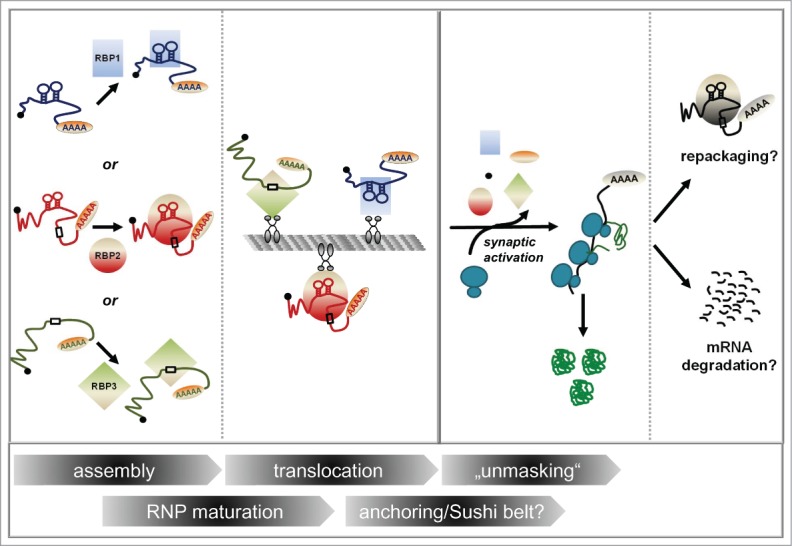Figure 1.

Distinct classes of mRNAs bearing distinct localization elements (LEs) are assembled with the help of specific RBPs (RBP1, RBP2, RBP3) into heterogeneous mRNPs. Those LEs are represented either as a linear primary sequence element (indicated by boxes) or a stem-loop for higher-order structures, respectively. mRNPs may change in their composition (“RNP maturation”) before and/or during their translocation process along microtubules (“translocation”) before they are either locally anchored or when they patrol synapses (anchoring/”sushi-belt?”). Translational repression is relieved upon synaptic activation (“unmasking”). Here, mRNA bound proteins (RBPs and probably also cap- and polyA-binding proteins, indicated by the little black and orange circle, respectively) dissociate from the mRNP, resulting in the mRNA being translated by ribosomes. Eventually, translation will terminate and the mRNA locally degraded or alternatively repacked into an mRNP.
